



First things first, Antonio Robert is a great guy. He is literally the happiest and most lively artist I’ve ever worked with, his online postings contribute in a full and proper way to both digital art and open source code communities, and he finds space in his wetware for the feedership of cats. He has top-notch glitch credentials, and is hooked into some important ideas about where that field is going – being the most active, if not only ‘glitch artist’ currently showing work in the UK. His work is rooted in glitch aesthetics and ideas, but constantly pushing at its edges. He’s performed and presented at Tate Modern, Databit.me in Arles, France, glitChicago, and he has his first solo show coming up at BOM (Birmingham Open Media) later this year.
Beside his happiness and energy, the first thing you notice about Antonio is that he has this geeky thing going on, like some kind of 90s Spielbergesque computer wizz – I’m sure I heard him call his computer ‘baby’ once as he goded it into action – but when he came to perform as part of our Syndrome programme in Liverpool, he literally ripped his tee-shirt off in the middle of the room, just as he was about to start.
He is the embodiment, in many ways, of the kind of volatility and fun in lots of great glitch art. I hooked up with Antonio online, where we spoke about glitch, and how it relates to his new iconoclastic work on copyright.
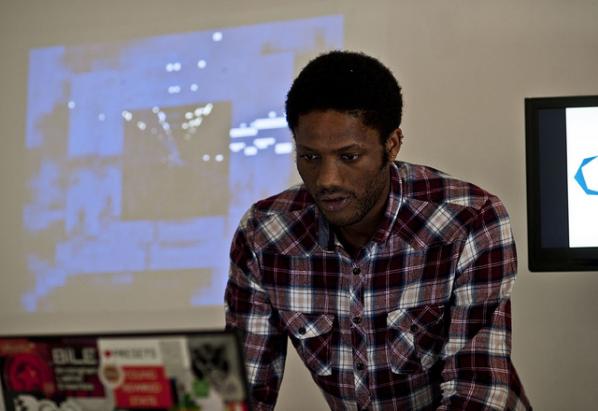
NJ: So… first question… You’re kinda out on your own in the UK it seems, as ‘the’ representative of the Glitch Art movement. I can see that that has been really great for you, for example with trips to Chicago etc… but does it also feel a little lonely?!
Antonio: Yeah, definitely. Ever since I helped bring the GLI.TC/H event to the UK/Birmingham in 2011 I’ve been getting questions about giltch art. I’m happy to impart my knowledge and experience to anyone that’s curious and my usual response is “you can do it too!”. That is, if you want to do glitch art there are so many tutorials about it. And, if you want there to be more events focused on glitch art all you need is an idea and some motivation.
NJ: There’s certainly an appetite for work which can reveal the systems underlying digital production – which is what good glitch art does. Do you think it is the term itself which is beginning to feel dated – as a result of an appropriation of its aesthetics? So fewer and fewer artists use this term now because its central modes are being used in a non-critical basis.
Antonio: I think it has become a bit dated through appropriation. That isn’t to say that glitch art has to be a specific thing and made using community-approved techniques, but now I see art that is just noisy or digital-looking that is described as glitch art.
NJ: I want to draw attention to some works of yours – or others – which seek out new (or different) systems which which to destructively engage. Because I think your work is still very much exploring and finding new territories opening up with this trope, while remaining within the ‘glitch’ genre. The work you made for the EVP website, “spɛl ænd spik:” modulated the construction of speech with phonemes. Where does the error enter into this, and do you consider it a departure from your work previous?
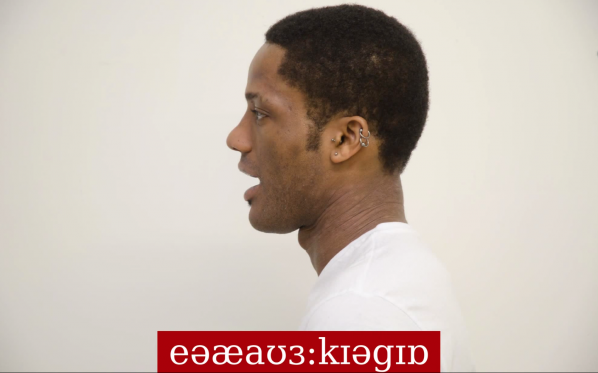
Antonio: It’s definitely a departure in terms of aesthetics.
NJ: It is not multicoloured!
Antonio: Hahah yeah. Even my clothes are plain. I wanted the focus to shift from the aesthetics of glitch. Glitch art incorporates many themes including randomness, error, helplessness, the unexpected, machine driven operations. And for the EVP piece I wanted to focus on randomness. I think the error lies in the perceptions of the viewer. When it was exhibited publicly at the Next Wave Exhibition at the RBSA many people thought that it was my voice and, at times, they could hear English words, so, the thing “glitching”, or experiencing an error in this case is their perceptions.
NJ: The tension between the random sounds and the possibility of speech is certainly unsettling.
Antonio: Then there’s the fact that those random sounds are coming from a human image… Digital and “New Media” art is still a new thing for many audiences and institutions, so confusion or bafflement is to be expected. I just hope that this then turns into curiosity. I hope that audiences then begin to ask questions about what it is they’re seeing and how it fits into their ideas about art, creativity and everything else.
NJ: There is something which Bifo Berardi says in “The Uprising: On Poetry and Finance”, where he is noting how ‘political decision has been replaced by techno-linguistic automatisms’, and it seems like ‘glitch’ art has a role to play here which is analogous to the one he assigns poetry in this book. Do you think that the kind of work you do with error is innately political or have revolutionary potential in this way?
Antonio: There is the overtly political work that I have made in the past. For example, Copyright Atrophy, which uses scripts and programs to challenge notions of ownership and copyright, was made specifically to be challenging, as was the work What Revolution. Another theme that interests me is copyright and free culture. And it’s always been there in my work, just not the core message. Now, for example, there is also the work about copyright which is currently being developed (as Archive Remix) as part of my residency at the University of Birmingham. It fits a long tradition of artists remixing artworks and appropriating culture. I’m hoping to bring about a change in attitudes at the university through my work with them.
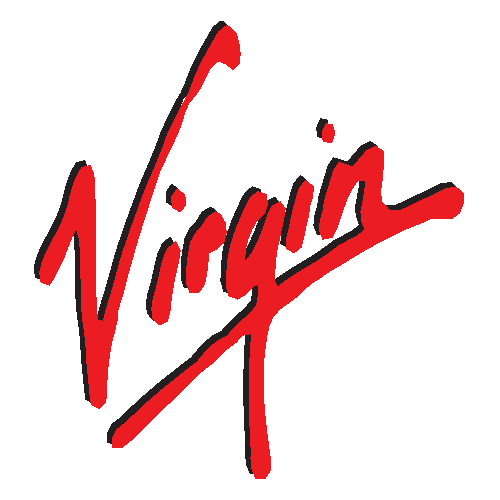
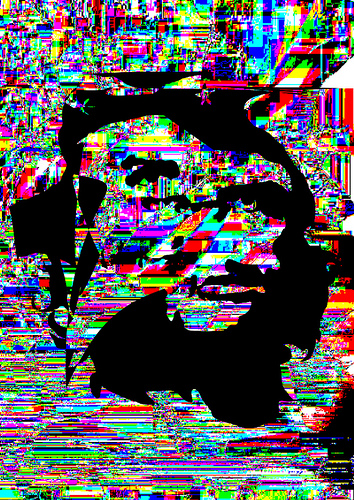
NJ: Just looking at the work you’re doing at University of Birmingham, it seems to deal with the same theme as Copyright Atrophy, which is a kind of horizon of ownership – which relates also to the horizon of meaning… between meaning and meaninglessness, between owned and apprpriated. So there is a point in the logo-gifs of Copyright Atrophy, and the Archive Remix animations, where they are operating simultaneously as a symbol, or original – and as a new, catachrestic symbol for something yet to be defined. I’m taking the term catachresis here from the way Lee Edelman uses it in his literary and cultural criticism such as No Future, to describe how ‘misuse’ of given words leads to an opening up for heretofore undiscovered territory – also similar to what Rosa Menkman describes as Glitchspeak.
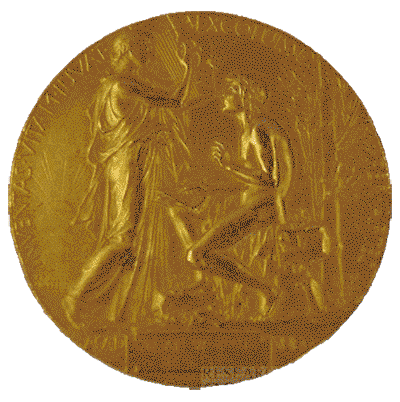
Antonio: Indeed. Although in Copyright Atrophy I am “destroying” the logos, in some way I’m evolving them too. I want to show that a piece of artwork is never truly finished as it may be reinterpreted and remixed by people, and also that we should let this natural evolution happen. Another example to illustrate this evolution is Comic Sans Must DIe.
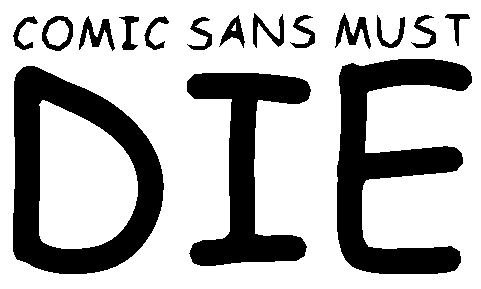
Yes, I’m destroying each glyph of Comic Sans, but some frames of that might make a good new typeface in itself. The short animations I’m making for Archive Remix are, at the moment, acting as case studies that I will take to the university to show good things can happen when you have more liberal licensing on images. As you may have seen, I also do a version of the animations with the copyrighted material censored. I want to show the perils of censoring. So underneath each “new” gif is one with the copyrighted material blacked out. Imagine if DJ Shadow’s album Entroducing only had works that had been cleared for usage!
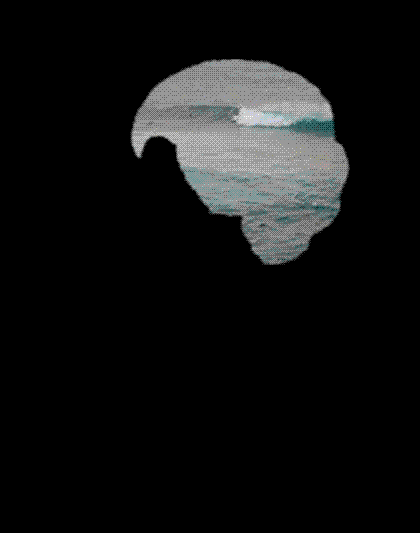
NJ: They are sad images, for sure. There is a melancholy at work here, which makes me think of the ‘death’ of the work, being the moment it has to stop evolving.
Antonio: Indeed.
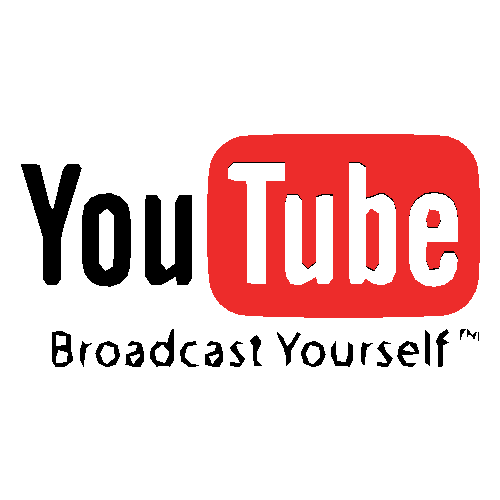
NJ: I feel that way sometimes when I perform a poem, or even read it out to someone on the phone, that somehow its limitations have been reached as potential. Do you think it’s this attitude of a work always being open to interpretation which creates an exit from the inevitably melancholy ending of a completed artwork? I guess that’s one reason why an open platform for the code you produce is attractive.
Antonio: I can see the performance or exhibiting of an artwork as limiting because what has to be presented is something finished. However, sometimes I see this as a chance to exhibit one iteration of the work. It’s always open to myself or others to remake or build on from. There have been people that have built on the code and programs that I make and I’m thankful for this. The best example of this was the method I created for generating jpgs from random data, which was in itself inspired by HEADer Remix by Ted Davis. David Schaffer greatly extended this into his own tool and Holger Ballweg ported the code into SuperCollider. If any code I write inspires others who am I to stop them from using or building on it?
NJ: A year or so ago, I proposed that art forgery should be legalised. I feel, along with many others, that the ‘art market’ has very little to do with the community of artists most worthy of admiration and respect. But perhaps it is ownership itself that is the problem. What is there in ownership ‘authorship’ which is valuable to retain? Attribution, I suppose – but what value in attribution?
Antonio: Yes, attribution is the important thing. All people should rightfully own the thing that they make. But problems arise because they then want to own everything that comes after it. So yes, remixes, reinterpretations are important and should be allowed, just as long as the original author is attributed for their work. It’s all a confusing and scary time for artists and the art world. Everyone’s wondering how they can make money and sustain their practice whilst still reaching as many people as possible. I hope that through my work I can show that these new approaches (open source, free culture, liberal licensing etc) can yield positive results and won’t necessarily result in the loss of earnings or opportunities.
NJ: It’s kind of ironic though, isn’t it, that digital artists like yourself who actively question and disrupt the basis of the apparently ‘infinite flows’ of digital content, finance… are part of a scene whose infrastructure itself is crumbling, and who generally suffer a very real stress and insecurity as a result. This is exacerbated as well by the kind of funding environment which might be offsetting this instability somewhat, but where digital artists are co-opted ecosystem of ‘digital economy’ — rather than a ‘cultural economy’ — itself formed around ideas of efficiency, and hence ‘labour savings’? Do you think this might actually be harmful?
Antonio: Yes, I think it’s dangerous focusing just on digital economy and making everything digital. Sure, it’s exciting that technology brings us all of these opportunities, but it leaves behind everyone that doesn’t work in that way.
NJ: Finally, on this subject, I thought you might like to highlight some contemporary work which influences you, which comes from outside the ‘digital art’ scene (if this is even possible!) and thus contributes to the ecosystem of digital innovation, in more traditional forms.
Antonio: One of my influences was Arturo Herrea’s 2007 exhibition at the Ikon Gallery. I loved the way there was order in the chaos. Outside of that it’s really difficult to find examples of influential work that isn’t in some way digital. A lot of the live performance, sculpture and video work that inspires me is often not only made using digital technology – 3D printing, projection etc – but is about digital and internet culture.
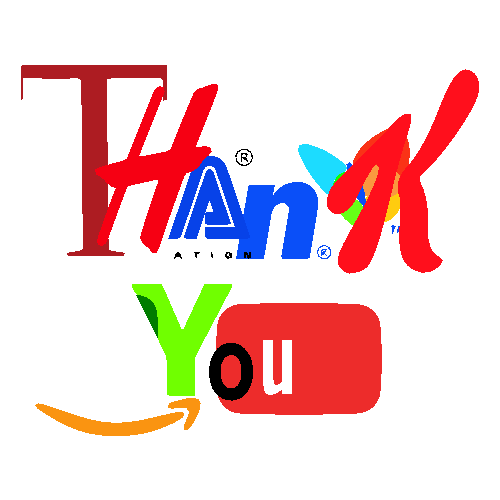
You can follow Antonio on
http://www.hellocatfood.com/http://hellocatfood.tumblr.com/
and https://twitter.com/hellocatfood
and Nathan is at https://twitter.com/nathmercy